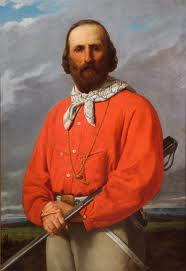Garibaldi returns to the South

ROME-A collection of weapons, letters, personal objects and the emblematic red shirts has been brought to the public for the first time in the newly opened Garibaldi Museum in Amorosi.
Inaugurated precisely on the day of the anniversary of Italian Unification, the exhibition installed in the 18th-century Palazzo Maturi gathers treasures accumulated over many years by one of Italy’s more controversial politicians, Bettino Craxi, for whom creating an exhibition space dedicated to Italy’s “father of the fatherland” was a long-nurtured dream.
Before he could make it come true, however, the “Clean Hands” investigations into corruption in Italian bureaucracy, business and politics launched in the early 1990s led to mass charges and arrests, and Craxi, the former head of the Italian Socialist Party, was not going to be spared. The situation called for drastic steps, and in May 1994 Craxi fled to Hammamet in Tunisia, where he remained until his death six years later. Upon his departure, however, in a brief conversation on the tarmac of Ciampino airport, he passed his legacy on to his personal photographer, friend and confidant, Umberto Cicconi, leaving him with the task to reassemble the relics stored in Craxi’s residences scattered around Italy and exhibit them in a museum devoted to one of the greatest Italian heroes, Giuseppe Garibaldi.
Ten years have passed and the dream has now become reality: from Monday on visitors can get a glimpse into the life of the 19th-century revolutionary and have a close look at Garibaldi’s rifles, private correspondence, and a few of the distinctive red shirts, which gave the name to his soldiers and became the symbol of his followers. Together with the exhibition dedicated to Garibaldi, written and photographic material documenting the Allies’ effort in the Second World War and Italian history from the post-war years, through the period of “la dolce vita”, up to the 1970s and the “Years of Lead” marked by social and political turmoil, has been put on display in the museum, which will also host conferences, seminars and cultural events.
The choice of Amorosi as a place where Garibaldi’s memory would be kept alive for future generations was largely determined by the support Umberto Cicconi received for the project from its mayor – and the apparent lack of interest elsewhere.
That notwithstanding, this little town situated on a plain between the rivers of Calore Irpino and Volturno, which remembers the heroic battle fought by Garibaldi’s “Thousand” against the Bourbons’ army, seems to be a legitimate location for a museum honouring its hero. Whether he should be referred to as such, however, is not at all obvious to everyone, and despite more than 150 years separating us from the fateful expedition, its leader still divides Italians today.
So much so that in the week leading up to the opening of the museum, Mr Cicconi received several threatening letters attacking the initiative. “These threats do not scare me,” the curator said.
“My ancestors were bandits who fought against Garibaldi together with the Bourbons. But the history of the South needs to find a place of dialogue. The museum of Amorosi can and will have to serve the dialogue between the South and the North, which still have not understood one another.”


